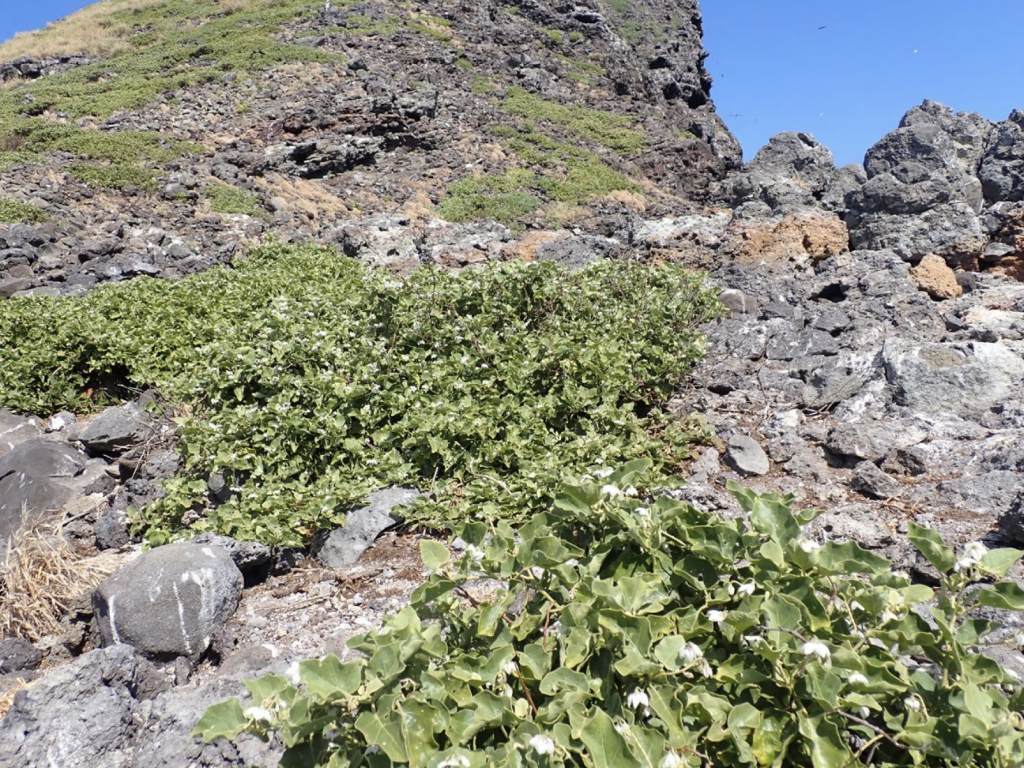Draft Recovery Plan proposed for 50 endangered and threatened species in Hawaiʻi

Fifty endangered and threatened species in the Hawaiian archipelago are included in a draft recovery plan published by the US Fish and Wildlife Service. This covers 35 plants, 13 invertebrates, and two birds.
Recovery plans are roadmaps that the Service and partners use to prevent extinction of species and support their recovery.
This draft recovery plan is available for public comment and will be made available until April 25, 2022.
Hawai’i is home to some 578 species protected under the Endangered Species Act, with many found nowhere else in the world. Of the 50 species covered by this draft recovery plan, 48 are endangered under the ESA, meaning they are currently at risk of extinction.
The ESA defines threatened as species at risk of extinction in the foreseeable future. All of the plants and animals in the draft recovery plan face similar threats – habitat loss, introduced disease and non-native and invasive predators like rats, cats and pigs. In addition, climate change is exacerbating and accelerating these threats across Hawai’i and the Pacific Islands.
“This recovery plan for 50 species underscores just how important proactive, community-based partnerships are to our work in preventing extinctions and supporting recovery,” said Shannon Estenoz, Fish and Wildlife and Parks Assistant Secretary. “Collaborative recovery plans are especially important in places like Hawai’i, where we face significant conservation challenges including growing threats from invasive species and habitat loss, which are amplified by climate change. We look forward to continuing our important work with conservation partners in Hawai’i to preserve its unique biological heritage for future generations.”
Plants are foundational to the unique island ecosystems of Hawai’i, and the 35 plants in this draft recovery plan co-evolved in isolation with the archipelago’s endemic wildlife. One of the two bird species in the draft recovery plan, the ʻiʻiwi, a scarlet-colored honeycreeper, developed its long, curved bill specifically for pollinating the lobeliads and other flowers unqiue to Hawai’i. Many other Hawai’i plants and animals share a similar symbiotic relationship, depending on each other for survival.
Like many endemic species, the ʻiʻiwi was once protected from invasive predators and disease. Today, forest birds like the ʻiʻiwi are threatened by avian malaria, a mosquito-borne disease that can kill a bird after one bite from an infected, non-native mosquito. Many forest birds like ʻiʻiwi are able to thrive in higher elevated areas where mosquitoes cannot survive, but rising temperatures caused by climate change are shrinking those protected areas and putting species like ʻiʻiwi in increasing danger.
Recently the Service proposed removing 23 species from the ESA due to extinction, with nine of those once found in Hawai’i. Most of the species listed were in such decline or existed in such low numbers they did not have a chance to benefit from the protections provided by the ESA.
In the Pacific Islands, natural resources are cultural resources as well, and when they disappear, so do their important roles in our heritage and communities. Now more than ever, it is important to work with our partners to protect Pacific Islands wildlife and plants for future generations.
The ESA has been extraordinarily effective in preventing extinctions, with more than 99 percent of all listed species still with us today. The ESA has also spurred unprecedented partnerships on behalf of wildlife conservation in America, with diverse states, federal agencies, private landowners and stakeholders coming together to conserve and recover listed species and their habitats. In total, 54 species have been delisted and 56 downlisted due to recovery since the ESA was passed into law in 1973. Recovery plans are an important tool in achieving recovery and preventing extinction.
The draft plan will be available for public comment for 60 days. An electronic copy of the draft recovery plan is available at our website. Copies on CD are also available by request from the US Fish and Wildlife Service, Pacific Islands Fish and Wildlife Office. 300 Ala Moana Boulevard, Room 3122, Honolulu, HI 96850; telephone 808-792–9400.
To request additional information or submit written comments, please use one of the following methods.
- Written comments and materials may be submitted to the field supervisor:
- Attention: 50 Hawaiian Species Draft Recovery Plan, Pacific Islands Fish and Wildlife Office, at the above Honolulu address.
- Comments may be sent by email to [email protected]. Include “50 Hawaiian Species Draft Recovery Plan Comments” in the subject line.
In order to be considered, comments on the draft recovery plan must be received on or before April 25. All comments and materials received will become part of the public record associated with this action. The USFWS will accept comments received or postmarked on or before April 25.















